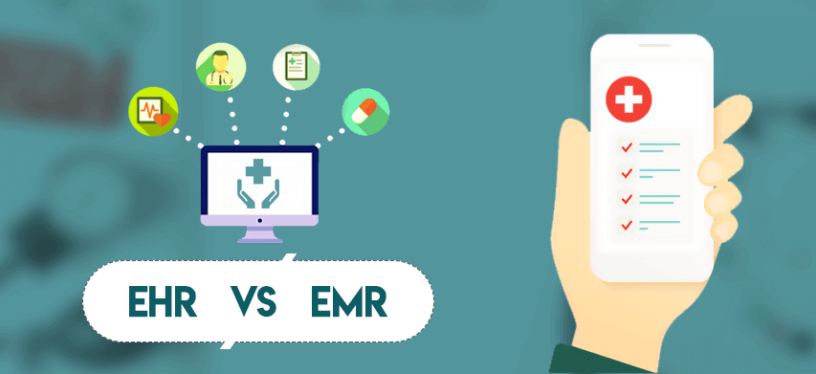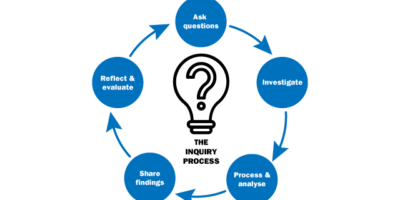Group C
June 3, 2024
Arun Alex – V00963247
Matthew Quach – V00968318
Xinyi Feng – V00942916
Kate Chan – V00977639
EHR vs. EMR
Overview
In contemporary healthcare, the seamless and timely exchange of patient information among healthcare providers is not only for business requirements, but also a critical component of delivering quality healthcare services. In general, several common healthcare systems involved with healthcare management, such as electronic health records (EHR) and electronic medical records (EMR), are digital versions of patients’ paper charts, but they serve different purposes. An EHR is a comprehensive record that allows for sharing among different healthcare providers, providing a holistic view of a patient’s health history, including previous medical history, diagnosis, medications, treatment plans, immunization dates, allergy history, radiographic images, as well as laboratory and test results (Hayrinen, Saranto & Nykanen, 2008). An EMR, on the other hand, is more limited in scope and used primarily within a single clinic or healthcare organization, focusing on the patient’s medical history and treatment within that specific setting (HealthIT.gov, 2019).
Misconceptions:
- Thinking EHR and EMR are the same: Although EHR and EMR are often used interchangeably, they refer to different concepts. An electronic medical record (EMR) is a digitized version of a clinician’s office paper chart. An EMR contains a patient’s medical and treatment history in a single office visit. The information in an EMR does not flow easily from the healthcare organization (Garrett, 2011). However, an electronic health record (EHR) goes beyond the standard clinical data collected in a healthcare provider’s office and includes a broader perspective on patient care. An EHR is created to share information with other healthcare settings, such as laboratories and specialists, so it contains a wider scope of information from all clinicians involved in patient care (Haan, 2022).
- Supposing data is entirely secure and private in EHR and EMR: Another misconception is that many believe EHR and EMR systems are completely safe and private and do not require much effort to maintain or concern. Current laws, including HITECH and HIPAA, require EHR and EMR systems to be safeguarded against unauthorized access (Basil et al., 2022). However, the digital power possessed by Internet hackers can still be a cause for concern. Medical record breaches can lead to identity theft, damaging individuals’ finances, credit, and reputations. Victims may be able to file lawsuits against the healthcare organization where the information breach occurred. If the breach affects multiple patients, the healthcare organization faces a lengthy legal battle (Electronic Health Records Security and Privacy Concerns, 2019). In that case, EHR and EMR systems still require continuous monitoring and maintenance to keep the platform’s data secure, and researchers need to be vigilant in applying solutions to different situations (Keshta & Odeh, 2021).
Learning Design Plan
| Big Idea | 1. The distinct roles and benefits of EHR and EMR in modern healthcare. 2. The importance of interoperability and comprehensive patient care through EHR/EMR. | ||||
| Essential Questions | 1. What are the key differences between EHRs and EMRs, in terms of their scope, functionality, and usage in the healthcare industry? 2. What are the privacy and security regulations that govern EHRs and EMRs, and how do these regulations ensure the safety of patient data? 3. What are the key steps to run and maintain EHRs and EMRs in a healthcare environment? 4. What does the future state of EMRs and EHRs look like due to the rapid adoption of technologies such as AI? | ||||
| Learning outcomes | 1. Define the definition and scope of EHR and EMR, and their core functionalities. 2. Identify the advantages and disadvantages of EHR and EMR utilized in the healthcare setting. 3. Compare and contrast the differences and interrelationships between EHR and EMR, and cite specific examples and use cases. 4. Describe privacy and security regulations for implementing and using EHR and EMR within healthcare institutions. 5. Assess the key steps to run and maintain EHR and EMR in real healthcare scenarios and case studies. 6. Apply knowledge of EHR and EMR used in demo systems. 7. Evaluate future technologies to integrate with and enhance existing healthcare information systems (e.g., with the help of AI). | ||||
| Evidence of Learning | 1. Learners will be able to correctly describe what an EHR is and what an EMR is in the context of Canadian healthcare. 2. Learners will be able to accurately describe the importance of EHR/EMR and their current adoption rate in Canada 3. Learners will be able to correctly compare and contrast EHR/EHR to previous health record technology (ie paper records) 4. Learners will be able to identify and describe future trends related to EHRs and EMRs 5. Learners will be able to correctly demonstrate how to create and store information about a demo patient inside a demo EMR system. | ||||
| Assessments | Quiz: A quiz consisting of multiple-choice, multi-select, and short-answer questions will be designed to assess the student’s understanding of our selected topic: EHR vs EMR. Multiple-choice questions will be used to test the student’s foundational knowledge of the topic, and this will also help students better learn the differences between EHR and EMR because they will be able to see the incorrect answers as they progress through the questions. Multi-select will effectively help assess the “edge cases” of a student’s understanding of the topic because deductive skills cannot be used to single out the correct answer as one can with multiple-choice questions. Lastly, the short-answer questions will allow students to use their creativity and critical thinking skills to create responses that are unique to them and their worldviews, as well as how they relate to the topic of EHR vs EMR. | ||||
| Learning Activities | 1. Grouping and Role Play: Students are divided into groups of four to five and assigned roles. Roles include healthcare providers, patients, and admin specialists who maintain the system. Each group designs a simulation of an EHR/EMR system. Steps include entering data into the simulation, retrieving patient history, collecting and storing information, and demonstrating a demo. This hands-on approach helps students deeply understand the concepts of EHR and EMR systems, integrate what they learn with real-world applications, realize the user experience, understand real-world challenges, and better apply what they learn in real-world situations. 2. Feedback Loop Discussion: Allocate the last ten to fifteen minutes of the class for students to review the lecture’s main points and discuss what they think about current EHR/EMR systems. Think about how AI, like ChatGPT, Gemini, Bing AI, etc., can help make EMR or EHR systems more usable, efficient, and user-friendly. Also, discuss certain areas and explore AI’s potentiality when combined with human intelligence towards advancing healthcare in the future. | ||||
Rationale for Developing This Learning Resource
One of the main reasons for selecting the topic of EMRs and EHRs for our learning resource is that three out of four of our group members are in the Health Information Science program and regularly interact with similar topics. We recognize that misconceptions often surround the topic of “EHR vs EMR” systems, and we believe that clarifying these misconceptions and differences would benefit general audiences. Our fourth group member is in Software Engineering and is interested in learning more about technology in the healthcare sector and in determining if there are any similarities or differences to technologies they have learned in their courses. Additionally, many of us use the Canadian healthcare system, and our group thought this would be a good opportunity to introduce a key component of the system that stores and manages our health data.
Resources
Title: EMR vs EHR: What is the difference?
Youtube Video: https://www.youtube.com/watch?v=bboJpjwGifs
Title: AI for Patient Referral – Healthcare EHR System Referral Automation – Integrated Fax to EMR System
Youtube Video: https://www.youtube.com/watch?v=EItYFkZUN8M
Scholarly Articles:
Title: Electronic health record: standards, coding systems, frameworks, and infrastructures
Book Reference: Sinha, P. K. (Pradeep K., Sunder, G., Bendale, P., Mantri, M., & Dande, A. (2013). Electronic health record : standards, coding systems, frameworks, and infrastructures. IEEE Press.m
https://search.library.uvic.ca/permalink/01VIC_INST/12198k2/alma9952193853807291
Title: Redefining Electronic Health Records (EHR) and Electronic Medical Records (EMR) to Promote Patient Empowerment
Article Reference: Anshari, M. (2019). Redefining electronic health records (EHR) and electronic medical records (EMR) to promote patient empowerment. IJID (International Journal on Informatics for Development)/International Journal on Informatics for Development, 8(1), 35. https://doi.org/10.14421/ijid.2019.08106
Technology tools:
WordPress, Google Forms, OpenEMR, SurveyMonkey
Project Plan
Overview – Kate
Misconceptions – Xinyi
Rationale for Developing This Learning Resource – Arun and Matthew
Big Idea – Kate
Essential Questions – Arun and Matthew
Learning outcomes – Xinyi
Evidence of Learning – Matthew
Assessments – Arun
Learning Activities – Xinyi
Resource – Xinyi and Mattew
References
Basil, N. N., Ambe, S., Ekhator, C., & Fonkem, E. (2022). Health Records Database and Inherent Security Concerns: A Review of the literature. Curēus. https://doi.org/10.7759/cureus.30168
Electronic health records security and privacy concerns. (2019). Iron Mountain. https://www.ironmountain.com/resources/blogs-and-articles/e/electronic-health-records-security-and-privacy-concerns
Garrett, P. (2011). EMR vs EHR – What is the Difference? – Health IT Buzz. Health IT Buzz. https://www.healthit.gov/buzz-blog/electronic-health-and-medical-records/emr-vs-ehr-difference
Haan, K. (2022). EHR vs EMR: What’s The Difference? Forbes Advisor. https://www.forbes.com/advisor/business/software/ehr-vs-emr/#:~:text=EHR%20and%20EMR%2C%20for%20instance,and%20deeper%20scope%20than%20EMR.
Hayrinen, K., Saranto, K., & Nykanen, P. (2008). Definition, structure, content, use and impacts of electronic health records: A review of the research literature. International Journal of Medical Informatics, 77(5), 291–304. https://doi.org/10.1016/j.ijmedinf.2007.09.001
Keshta, I., & Odeh, A. (2021). Security and privacy of electronic health records: Concerns and challenges. Egyptian Informatics Journal/Egyptian Informatics Journal, 22(2), 177–183. https://doi.org/10.1016/j.eij.2020.07.003
What are the differences between electronic medical records, Electronic Health Records, and Personal Health Records?. HealthIT.gov. (2019, May 2). https://www.healthit.gov/faq/what-are-differences-between-electronic-medical-records-electronic-health-records-and-personal






Leave a Reply